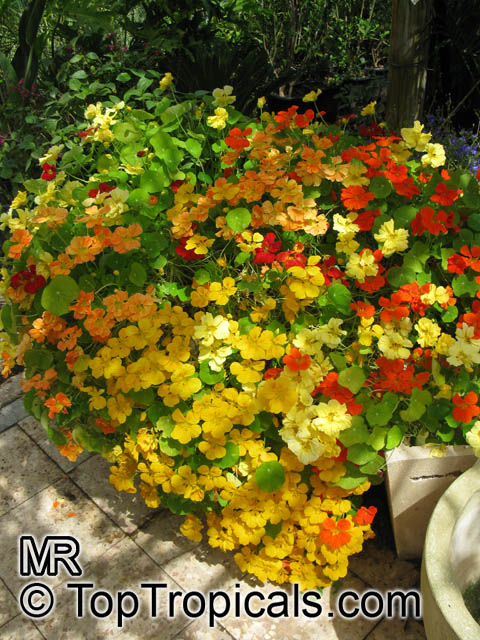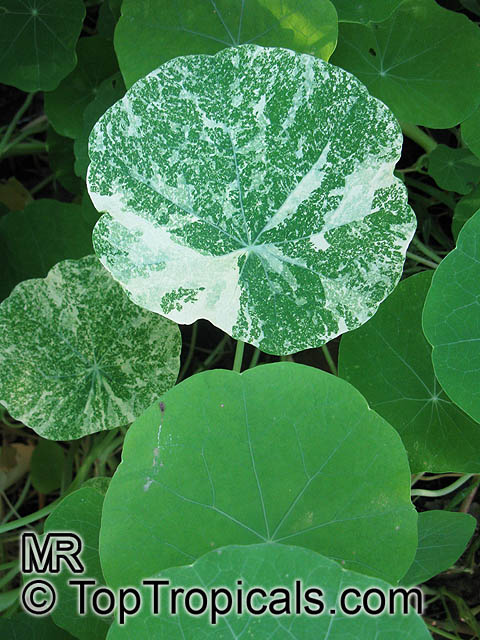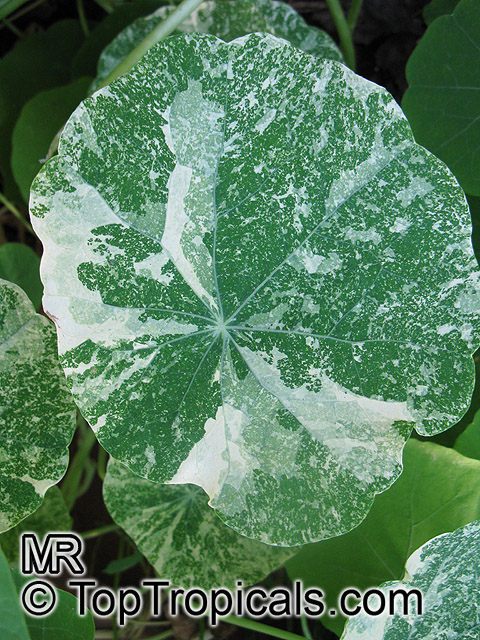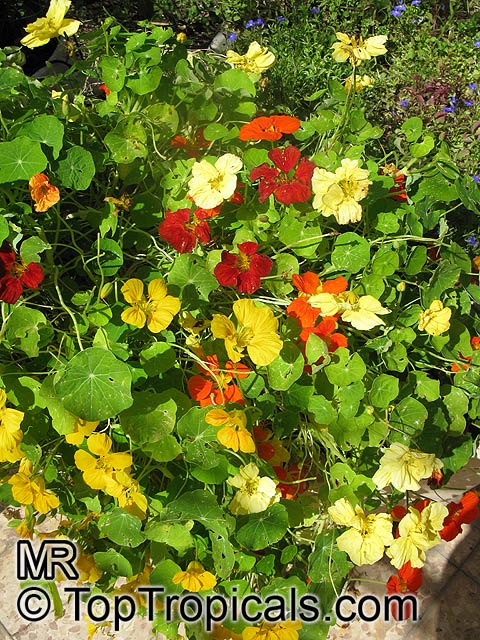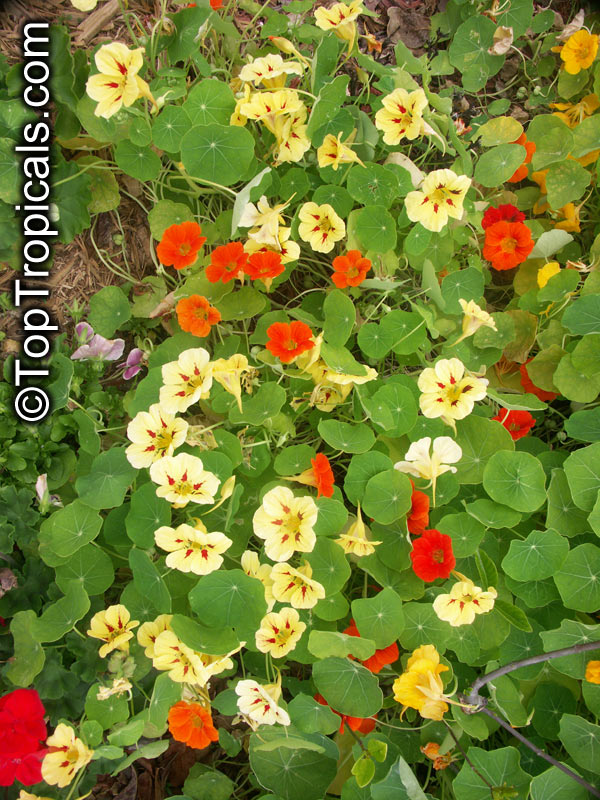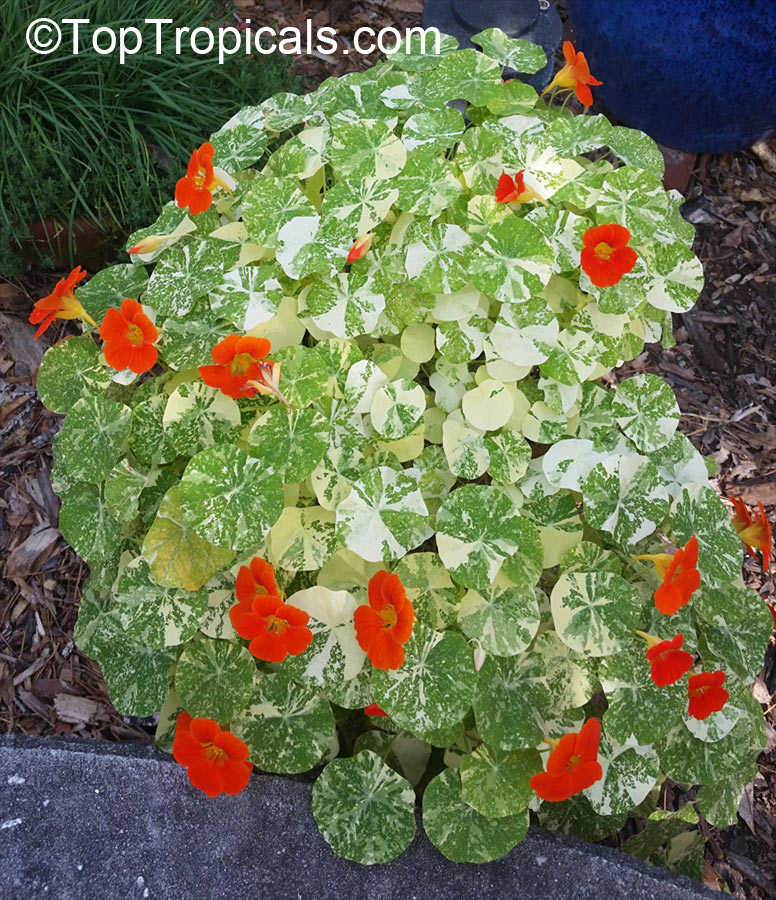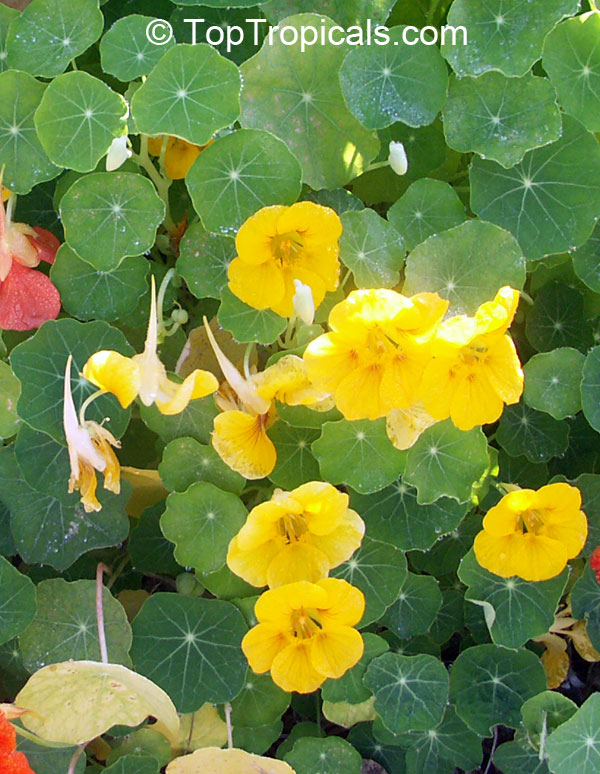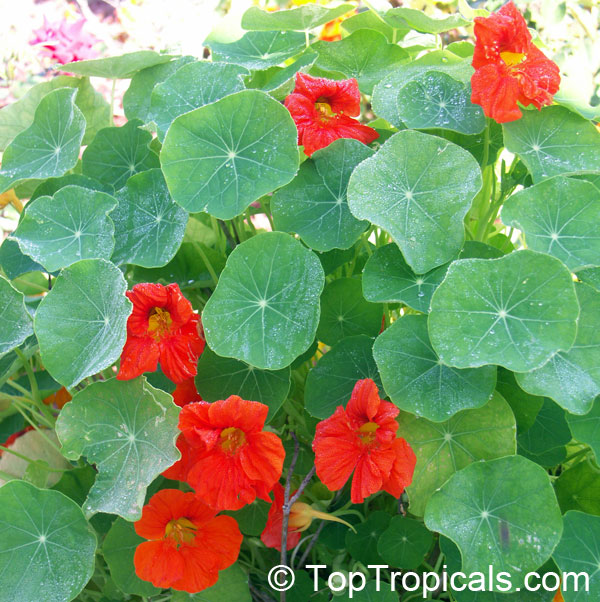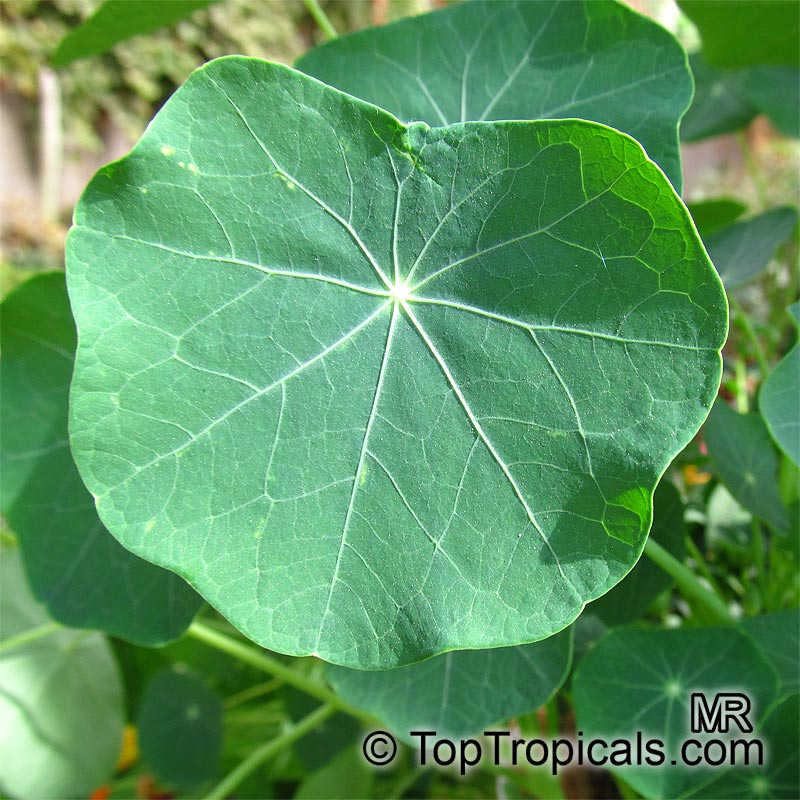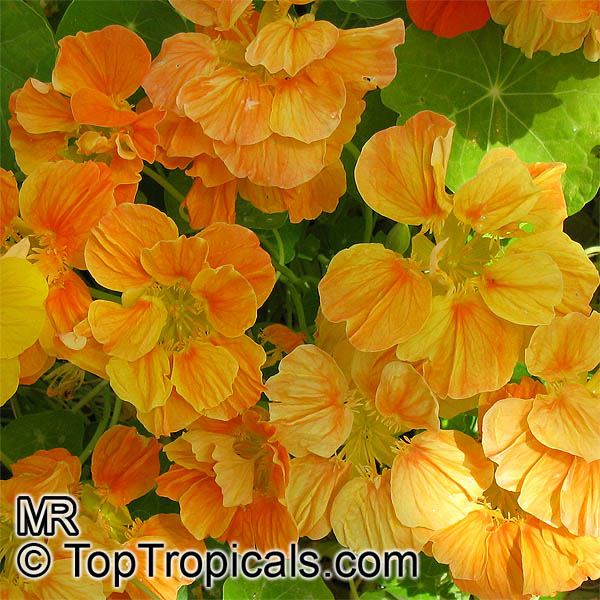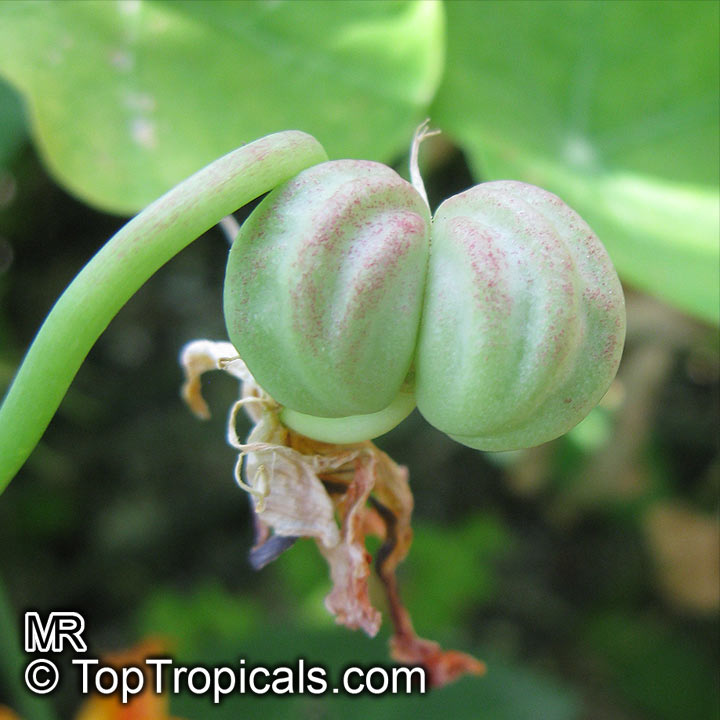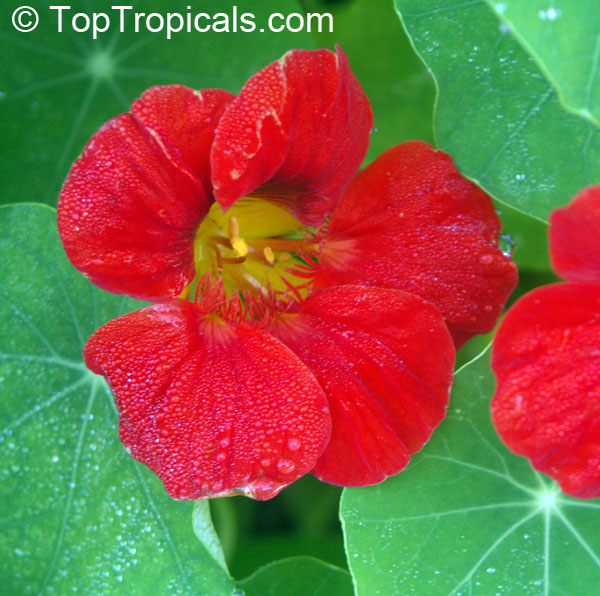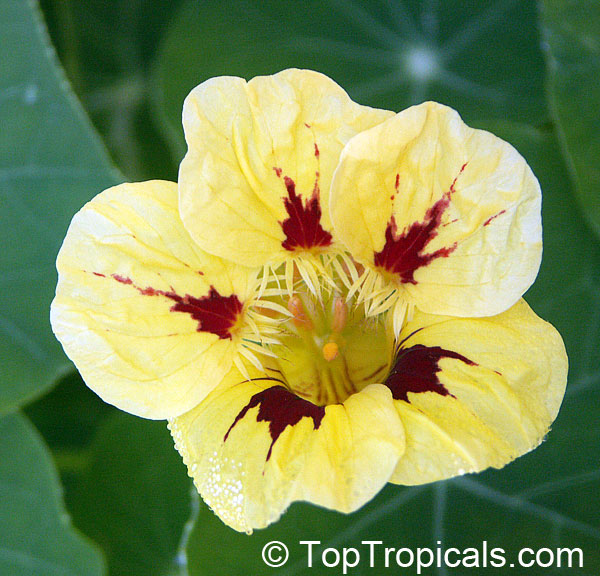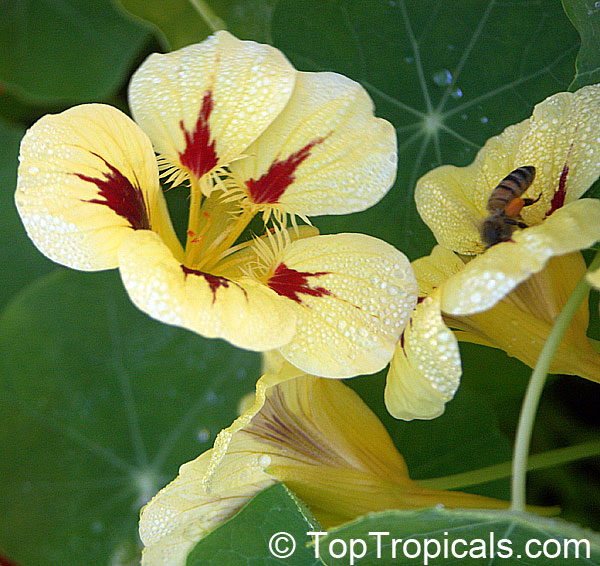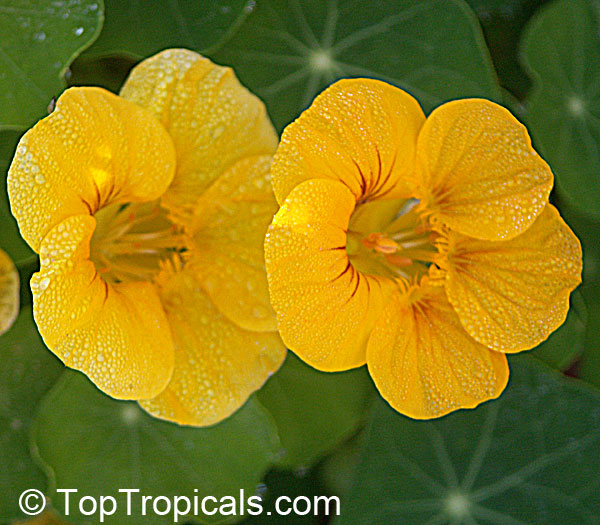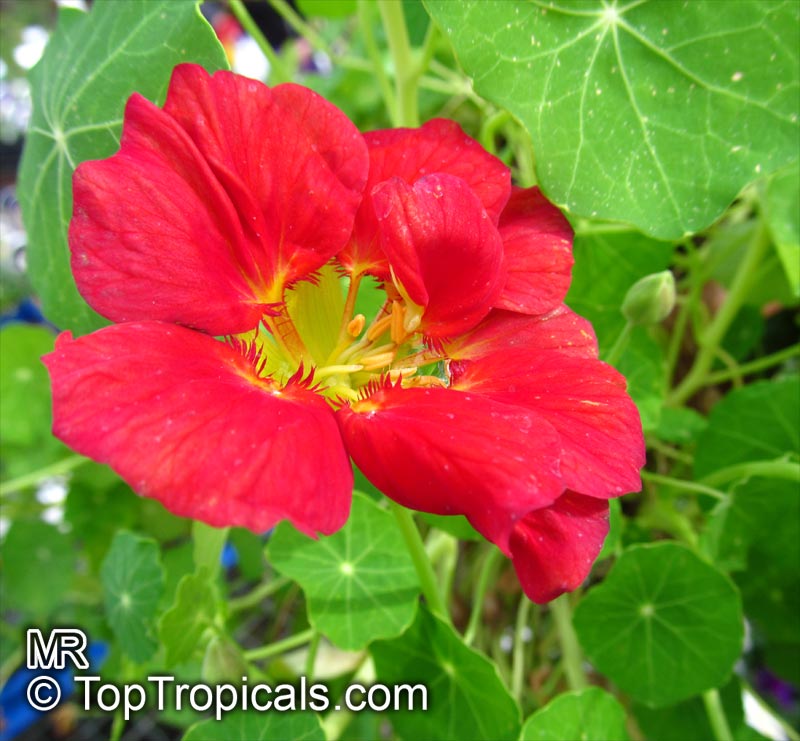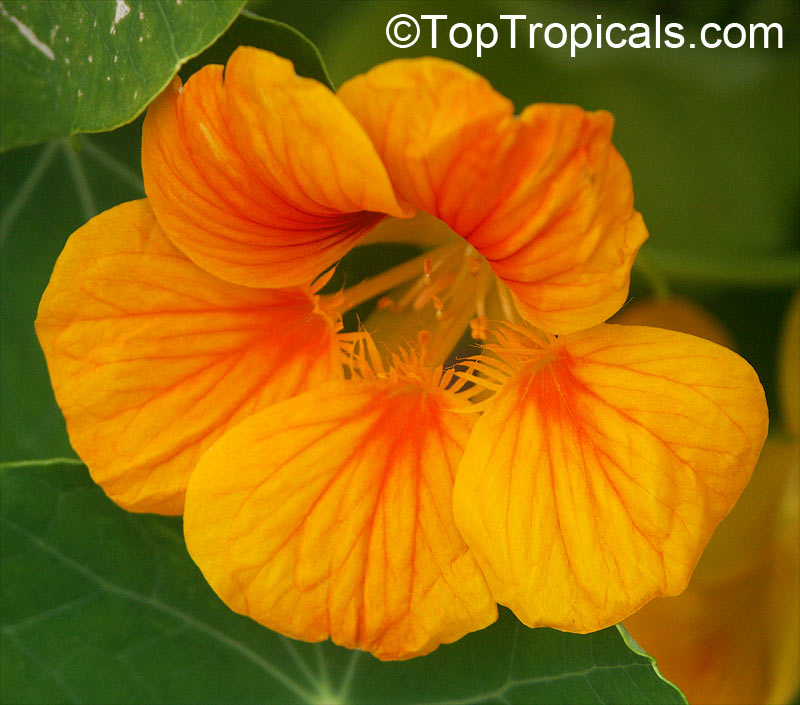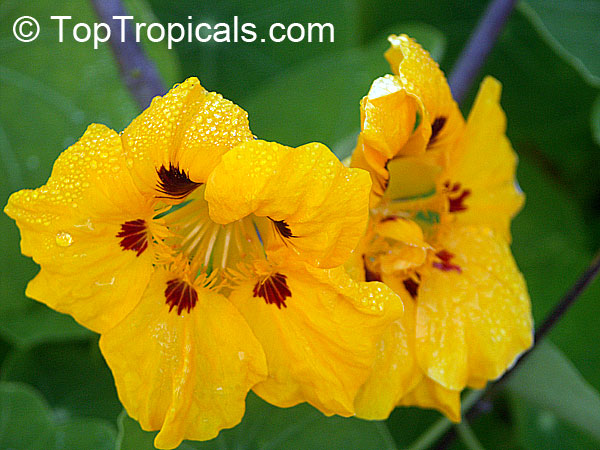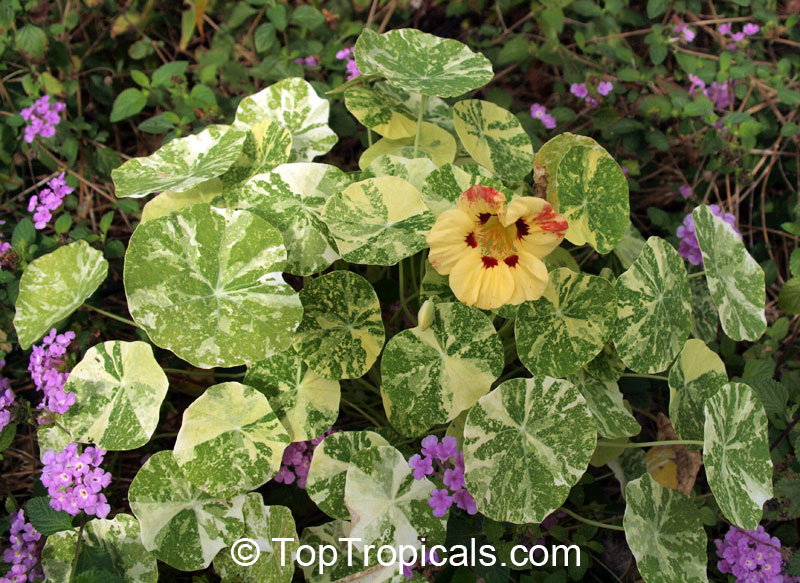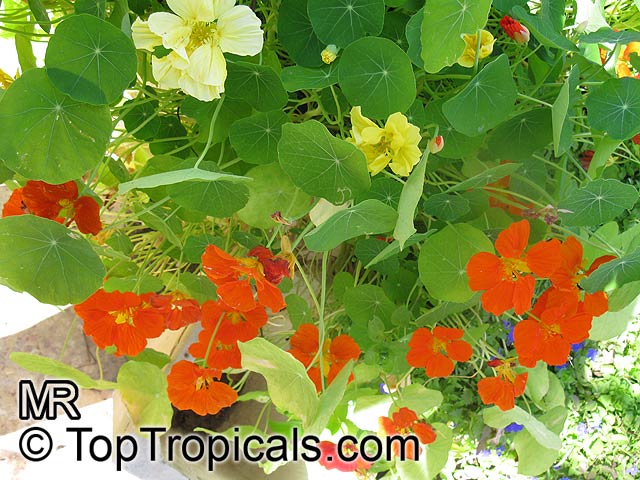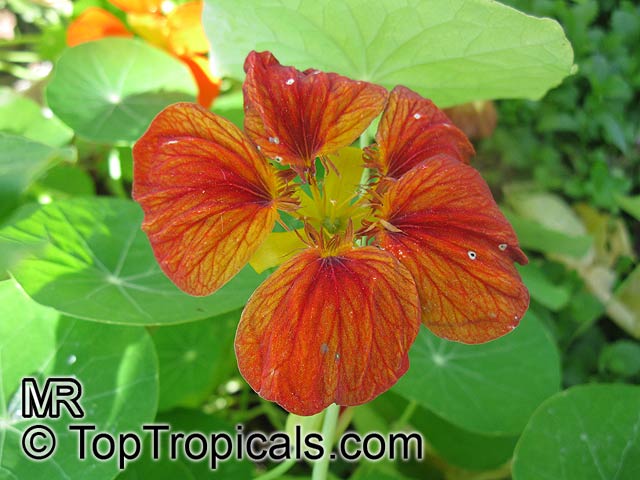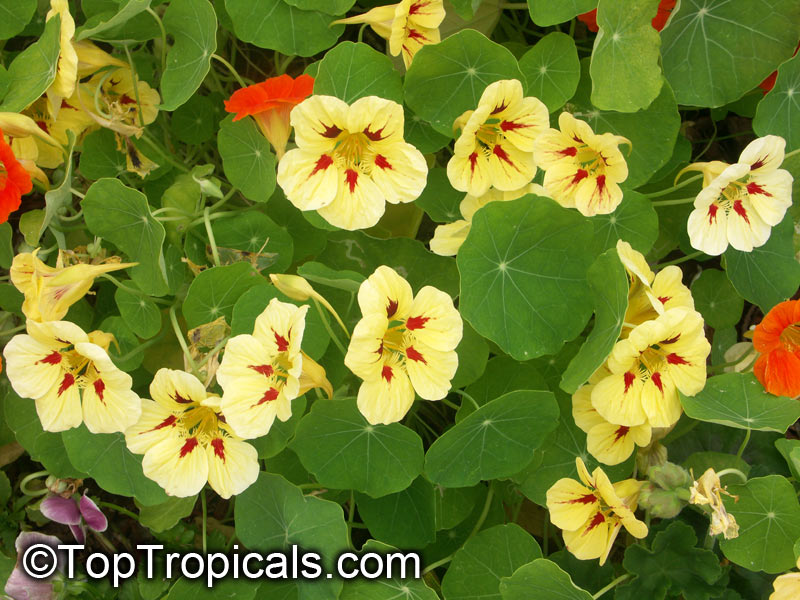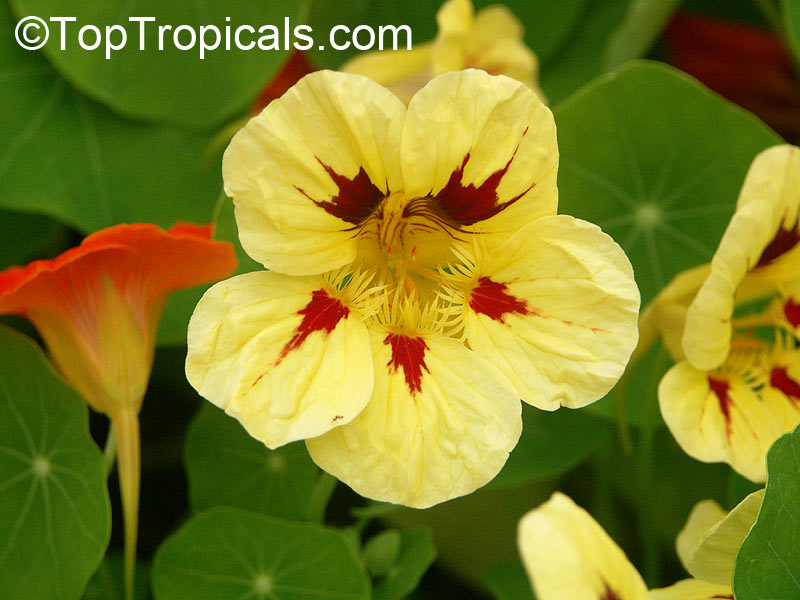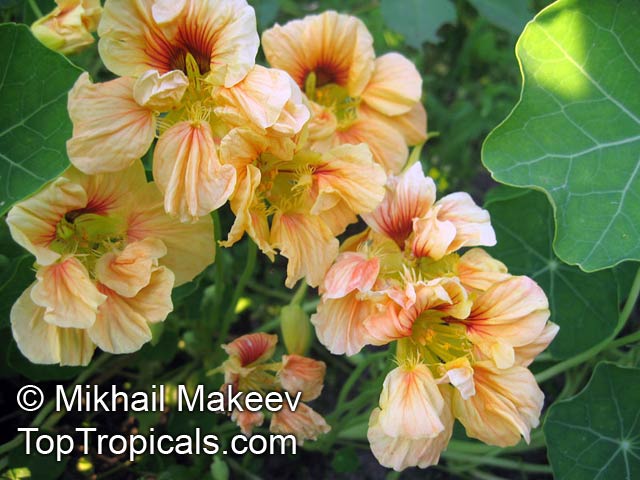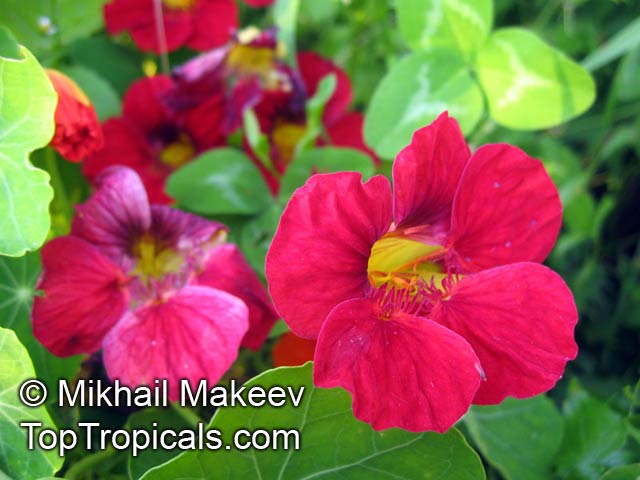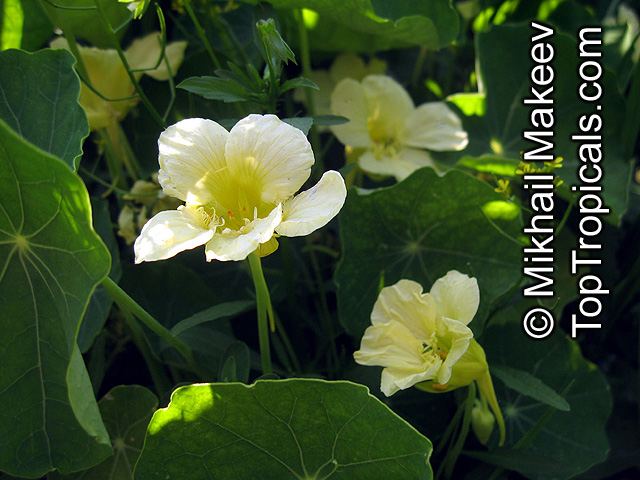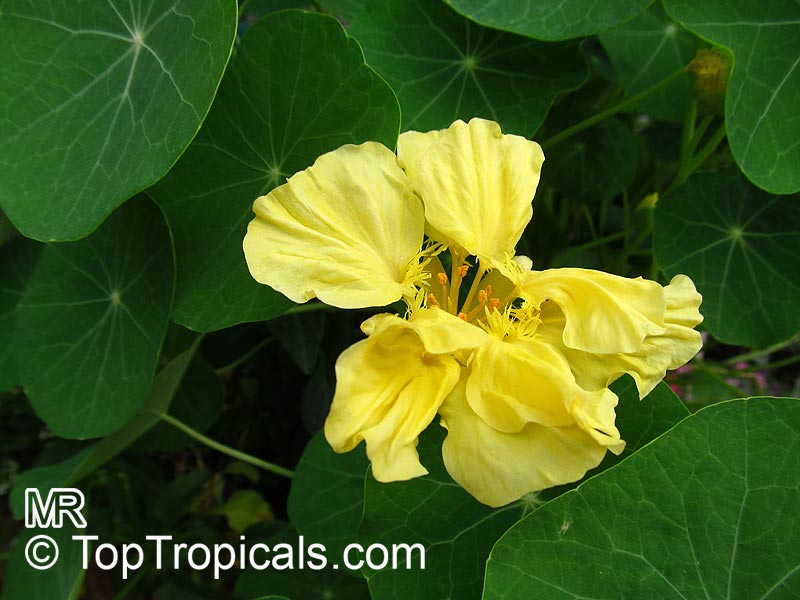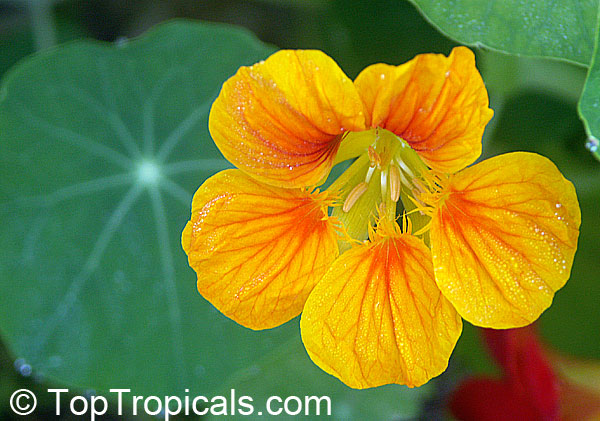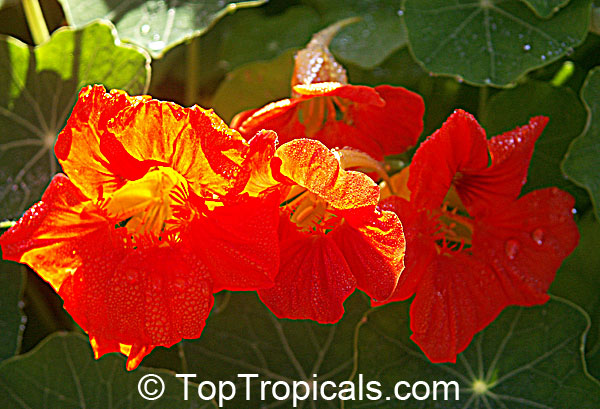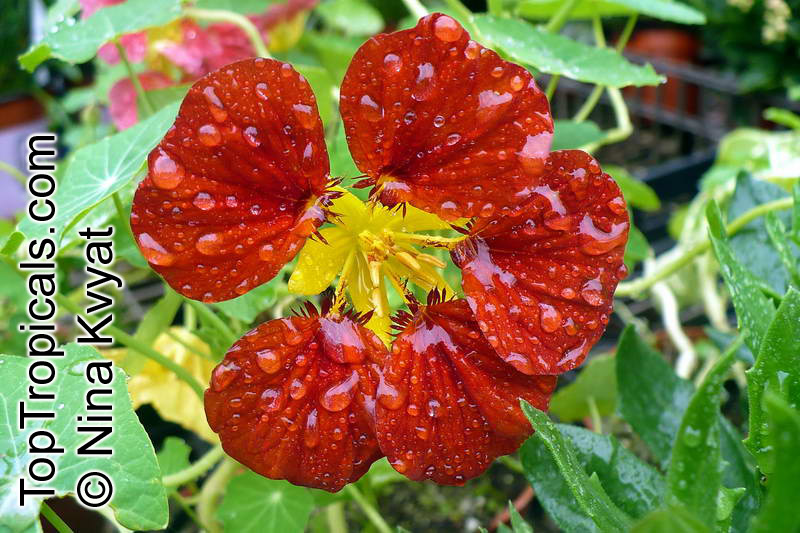Tropaeolum majus, Tropaeolum hybridum
Garden Nasturtium, Indian Cress, Monks CressFamily: Tropaeolaceae
Origin: South America















This garden favorite will spread like wildfire, produce decorative foliage, have an ocean of brightly-colored blossoms. It is a herbaceous fast growing flowering plant originating in South America in the Andes from Bolivia north to Colombia. Cultivated varieties have hybrid origin, with possible parent species including T. minus, T. moritzianum, T. peltophorum, and T. peregrinum. Trailing stems grow to a few feet. The leaves are large, nearly circular. They have a beauty of their own. Reminiscent of water lily pads, the more common ones are flat and round, with the stem attached to the center and the vein radiating out from there. Garden Nasturtiums are grown for their flowers, and also because both their leaves and flowers are edible; they can be used in salads, imparting a delicately peppery taste. Although the blossoms appear delicate, they are actually very durable and make for vibrant and long-lasting garnishes, one of their best uses. Use the blossoms either whole or chopped to decorate creamy soups, salads, butters, cakes and platters. Their sweet, peppery taste (both in the leaves and in the flowers) adds to the enjoyment. In fact, it is for its tangy taste that nasturtium gets its common name. It comes from the Latin "Nasus Tortus" meaning convulsed nose, referring to the faces people made when tasting the spicy plant. Take advantage of this spicy flavor as well as the decorative color. Use both leaves and blossoms in salads. Try adding them to spinach salads for a dramatic effect. Nasturtium's spiciness is also a winning addition to cheese spreads. The seeds are also edible, and can be used as a caper substitute and as a substitute for black pepper. Being high in vitamin C, nasturtiums act as a natural antibiotic, and as such were used topically as a poultice for minor cuts and scratches. Nasturtiums are also used in Ayurvedic medicine.
Nasturtiums are a gardener's dream. They are virtually carefree once established. Snails don't seem to be interested in them. They will even self seed and come back the next year in mild climate. Nasturtium is a good choice as a fast growing, ever-blooming showy ground cover. It is a great butterfly attractor. Ideally, nasturtiums like to be in full sun, with moist, well drained soil. Nasturtiums come in two forms: compact and trailing. The compact variety is low and busy, usually staying at about 12" tall. They are useful as border plants, creating a colorful and dense edge. The trailing variety cascades dramatically down walls or tumbles brightly out of hanging baskets. They are also perfect for window boxes and container herb gardens. Just be sure to keep them trimmed back or they will crowd out the other plants. Enjoy them all summer long!
Similar plants:
- Tropaeolum minus (Dwarf Nasturtium)
- Tropaeolum moritzianum (Moritz-Nasturtium)
- Tropaeolum peregrinum (Canary Creeper, Canarybird Flower, Canarybird Vine, Canary Nasturtium)
- Tropaeolum polyphyllum (Wreath Nasturtium, Andean Nasturtium)
- Tropaeolum tricolor (Chilean Nasturtium, Three-coloured Indian Cress)
